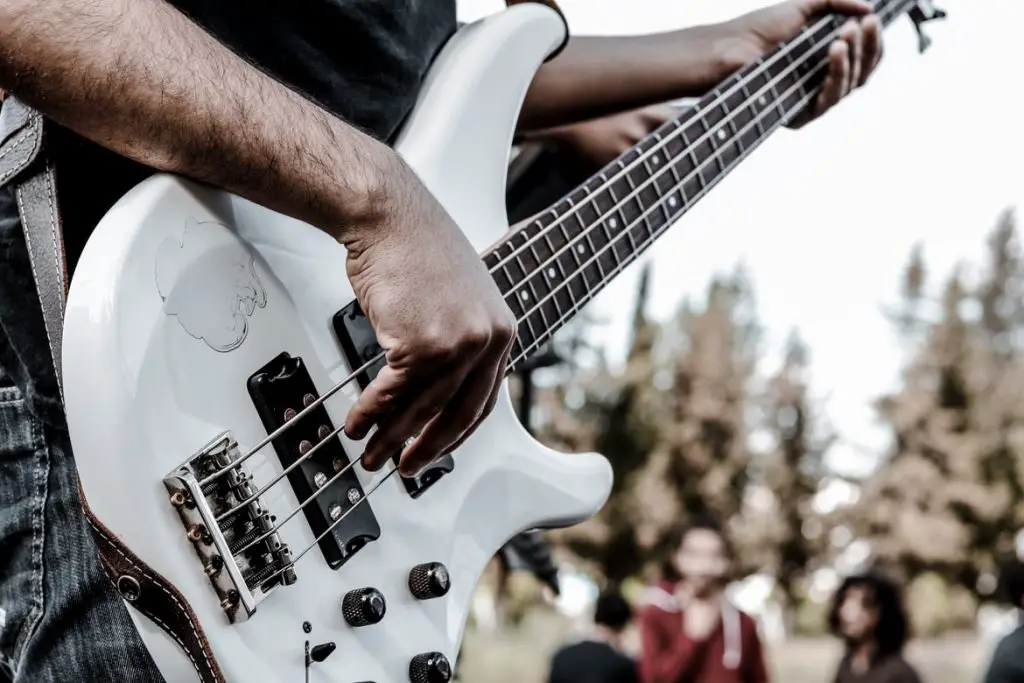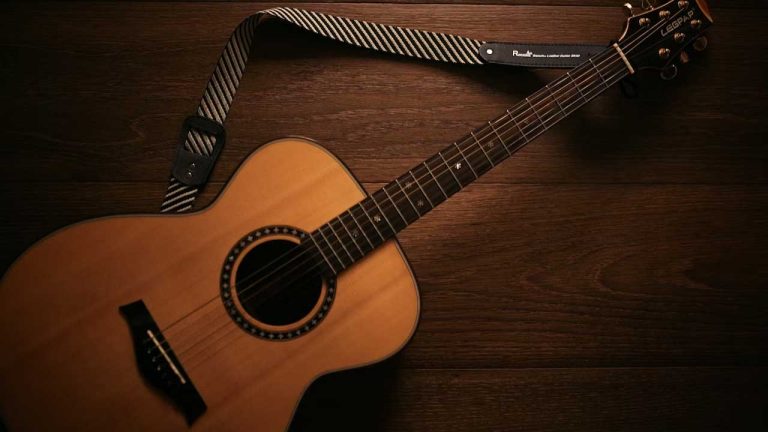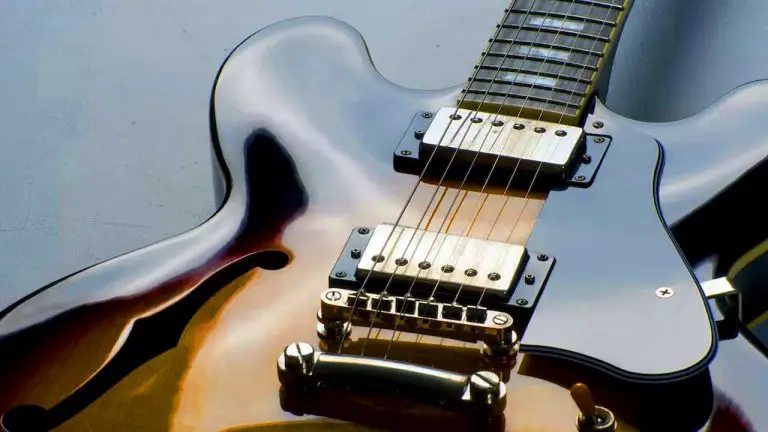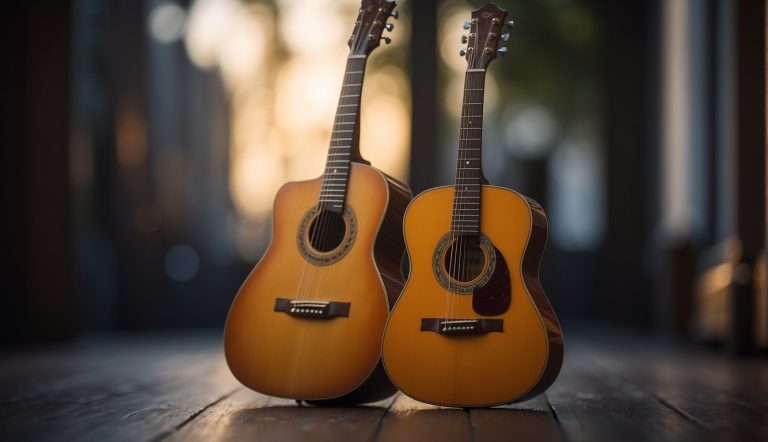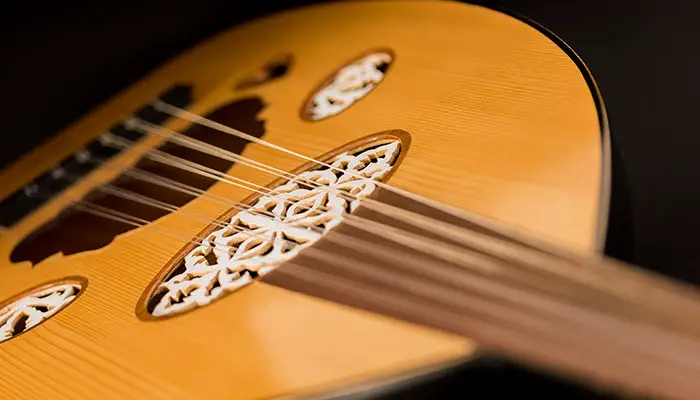Bass vs Guitar: Uncovering the Key Differences and Uses
Folkstrings.com is reader-supported. When you buy through links on our site, we may earn a small commission.
When deciding between learning to play the bass or the guitar, it’s important to understand the differences between them and how each instrument fits into various music genres. Both instruments have their own unique characteristics, but ultimately it’s up to you and your personal preferences as a musician.

Quick Sum Up
The bass is generally larger than the guitar and has a longer neck, with typically 20 to 24 frets depending on the style and neck length[source].
Bass is more suitable for jazz, funk, hip-hop, and similar genres, often acting as a supporting instrument.
In contrast, guitars are well-suited for rock n’ roll, melodic playing, and solos.
Since the guitar has six strings compared to the bass’s four, the guitar has a wider tonal range, while the bass can hit lower notes.
When it comes to difficulty, both instruments pose their own unique challenges. Bass often requires a strong sense of rhythm and groove, while the guitar demands intricate fingerwork for chords and melodies.
As you consider which instrument to learn, think about your personal musical tastes, the role you want to play in a band or ensemble, and your goals as a musician.
Table of Contents
Fundamental Differences
Size and Scale Length
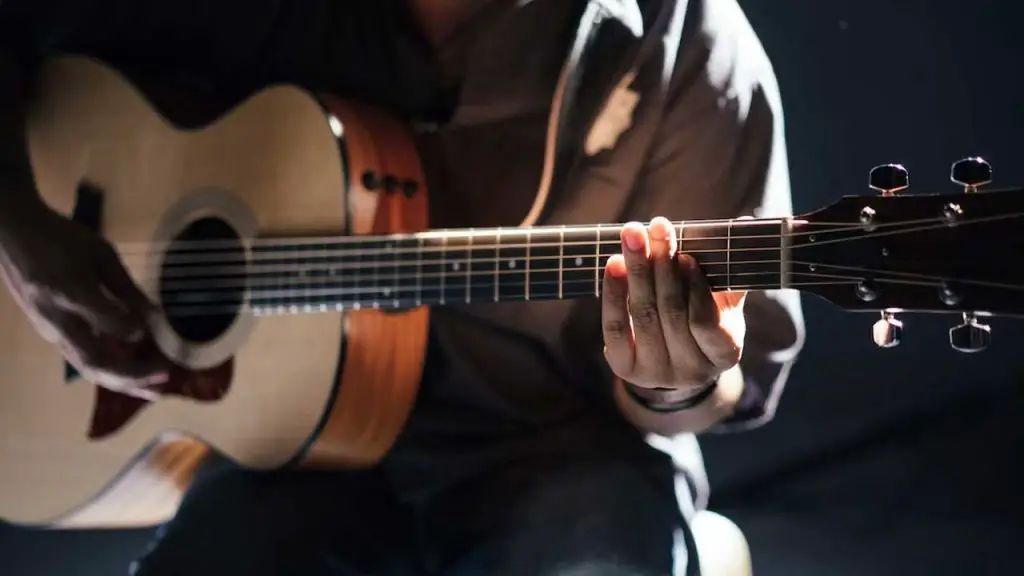
One of the key differences between a bass and a guitar is their size.
Basses are generally larger in size, with both long-scale and short-scale basses having longer necks than standard guitars.
This difference in size might make you feel more comfortable with one instrument over the other, particularly if you have smaller hands and prefer a smaller neck.
Tuning and String Thickness
Another important distinction is their tuning and string thickness. A standard bass has 4 strings compared to a guitar’s 6, which are essentially the 4 lowest strings found on a guitar.
Bass strings are also thicker than guitar strings, helping to produce those lower notes.
When it comes to tuning, most 4-string basses are tuned like a guitar: E-A-D-G.
As you consider which instrument to learn, think about whether you prefer the sound and feel of thicker strings and lower notes.
Tone and Sound
The tone and sound of the instruments also differ significantly.
A bass typically produces a deeper, lower sound, often serving as the foundation of a music piece. Guitars, on the other hand, offer a brighter tone and can serve a more melodic function in a song.
If you’re interested in playing the instrument that sets the rhythm and groove of a song, the bass might be the choice for you.
On the other hand, if you want to create melodies and solos, a guitar may be more appealing.
Chords and Riffs
Lastly, the way you play chords and riffs on a bass compared to a guitar differs as well.
Primarily, bassists play single notes, focusing on rhythm and groove, while guitarists play chords, riffs, and solos.
Learning the bass may provide you with a stronger understanding of rhythm, as you support the other musicians in a band.
If you enjoy the idea of being the backbone of the music, bass could be the right choice for you.
On the contrary, if you prefer to create harmonies and play fingerstyle, learning the guitar might suit you better.
Roles in Music
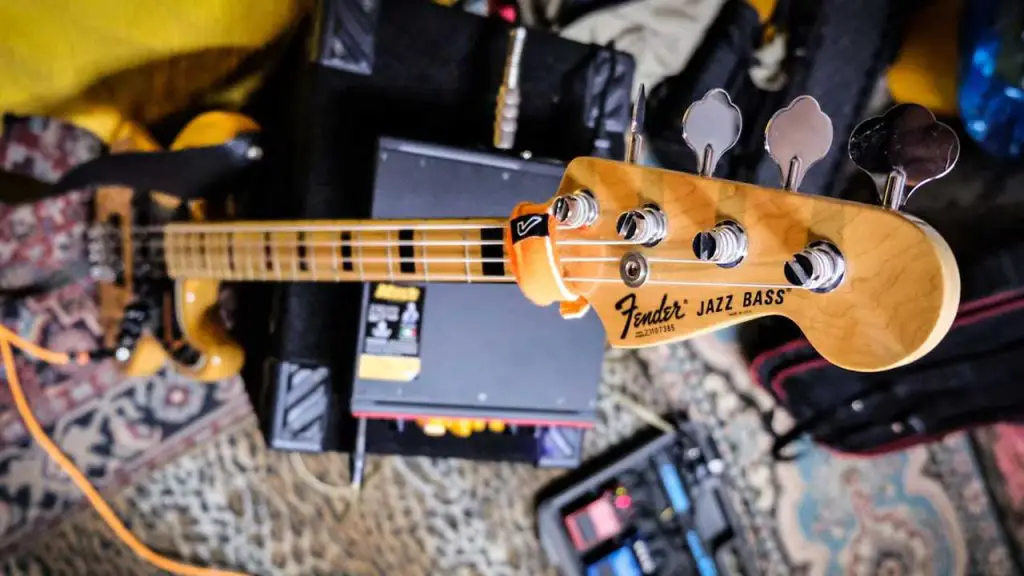
As you explore the world of bass guitar and guitar, it’s essential to understand their distinct roles in music.
This will help you make an informed decision on which instrument to start learning. In this section, we’ll dive into the roles these instruments play in Rhythm and Groove, Solos and Spotlight, and Genre Influence.
Rhythm and Groove
When it comes to rhythm and groove, the bass guitar is often seen as the backbone of a song. The bass provides a steady rhythm, building basslines that focus on individual notes rather than chords, giving a song its distinct feel and groove.
This is especially true in styles of music like rap, jazz, and funk, where the bass is essential in driving the beat and feel of the tracks.
On the other hand, the guitar usually creates chord progressions and complements the rhythm section, adding harmonic color and complexity to the music.
In many cases, the guitar works closely with the bass to reinforce the rhythm and groove, making them integral to the overall sound of the band.
Solos and Spotlight
Generally, the lead guitar takes the spotlight when it comes to solos, showcasing technical expertise and melodic creativity.
As a guitar player, you’ll have the opportunity to step into the limelight during solos, unleashing your creative flair and connecting with the audience on a deeper level.
The bass guitar, although not typically known for solos, can still shine in certain situations.
For instance, in jazz and funk music, bass solos are more common, allowing bassists to demonstrate their skill and express their musicianship. It’s essential to consider the type of musical roles that excite you when choosing between bass and guitar.
Genre Influence
Both bass and guitar are integral to various genres, but their roles can differ depending on the style of music. In metal music, the guitar is often aggressive and in-your-face, featuring heavily distorted and palm-muted riffs, while the bass guitar underpins the rhythm and adds a powerful low-end punch. In jazz music, the guitar usually takes on a more restrained role, providing smooth chords and light solos, while the double bass or bass guitar adds both melodic and rhythmic support.
Here’s a quick overview of the roles bass and guitar play in some common genres:
- Rap: Bass – essential rhythm and groove; Guitar – chord progression support and atmospheric texture
- Jazz: Bass – rhythmic backbone and melodic improvisation; Guitar – harmonic accompaniment and solos
- Funk: Bass – prominent basslines and syncopated rhythms; Guitar – rhythm support and occasional solos
- Metal: Bass – powerful low-end support; Guitar – heavy riffs and extensive solos
Understanding the role of bass and guitar in various genres can help you make the best choice for your personal goals and musical tastes.
Pros and Cons
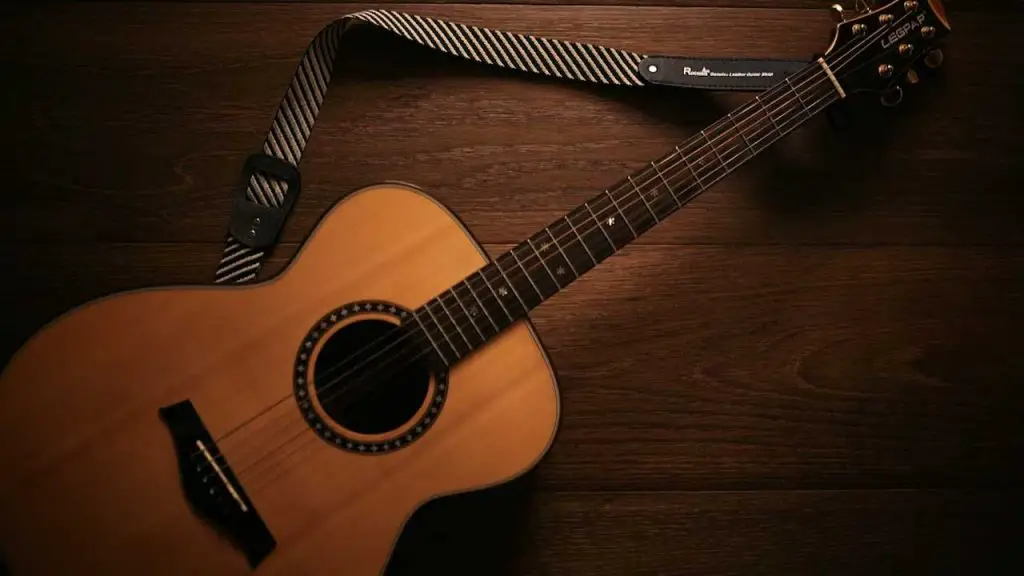
Playing Experience
As you decide between the bass and the guitar, one of the key factors to consider is the playing experience. Both instruments have unique features that cater to different preferences and skill levels.
For beginners, the guitar might be easier to learn, as it has more strings and a shorter neck, making it simpler to navigate for those with smaller hands.
Additionally, being a versatile instrument, it allows you to explore various genres and play styles.
However, as a guitar player, you may encounter more competition, as they are generally more common.
On the other hand, bass players tend to be in higher demand, given their scarcity. Although the bass has fewer strings, its thicker strings and longer neck — featuring between 20 to 24 frets — require more strength and dexterity to play properly. This challenge may be more appealing to some and beneficial for developing strong fingers.
Practical Factors
Another consideration is the practical factors when choosing between a bass and a guitar. Here are some pros and cons to weigh:
| Instrument | Pros | Cons |
|---|---|---|
| Guitar | More affordable options Wide variety of models Easier to transport | More competition among players |
| Bass | Less competition, higher demand | Fewer models to choose from Less comfortable to transport Averagely higher price |
Ultimately, your choice between bass and guitar should be guided by your personal preference, budget, and playing goals. Remember that both instruments offer unique opportunities for growth and creativity, so explore them to find the one that resonates with you the most.
Iconic Musicians and Styles
As you decide between learning bass or guitar, it can be helpful to explore iconic musicians and styles associated with each instrument. Delving into the works of influential players can inspire you and provide insight into the rich world of each instrument.
For bass, if you’re a music lover, you might have heard of James Jamerson, who revolutionized bass playing with his innovative use of chromatic scales and harmonies.
Another legendary bassist is Flea from the Red Hot Chili Peppers, whose energetic playing and slap bass technique has made him one of the most recognizable bassists in modern music.
- James Jamerson: Known for his work with the Motown sound, Jamerson brought chromatic scales and harmony to bass playing.
- Flea: Distinctive slap bass technique and lively presence have made Flea one of the most admired bassists in rock music.
When it comes to guitar, there are countless great musicians to explore.
Some famous examples include Jimi Hendrix, known for his unconventional playing techniques and innovative use of effects, and Stevie Ray Vaughan, whose soulful playing and incredible technical skill often make him a favorite among aspiring guitarists.
No matter your preferred style, there is an abundance of inspiring guitarists to learn from.
- Jimi Hendrix: A pioneer in psychedelic rock and innovative guitar techniques, Hendrix remains a legend in the guitar world.
- Stevie Ray Vaughan: A master of blues guitar, Vaughan’s technical skill, and soulful playing continue to captivate aspiring guitarists.
Both bass and guitar offer a wealth of iconic musicians and diverse styles for you to delve into. Whether you’re drawn to the rhythmic role of bassists like Flea or the melodic prowess of guitarists like Hendrix, your musical journey will be full of inspiration and creativity.
Choosing the Right Instrument
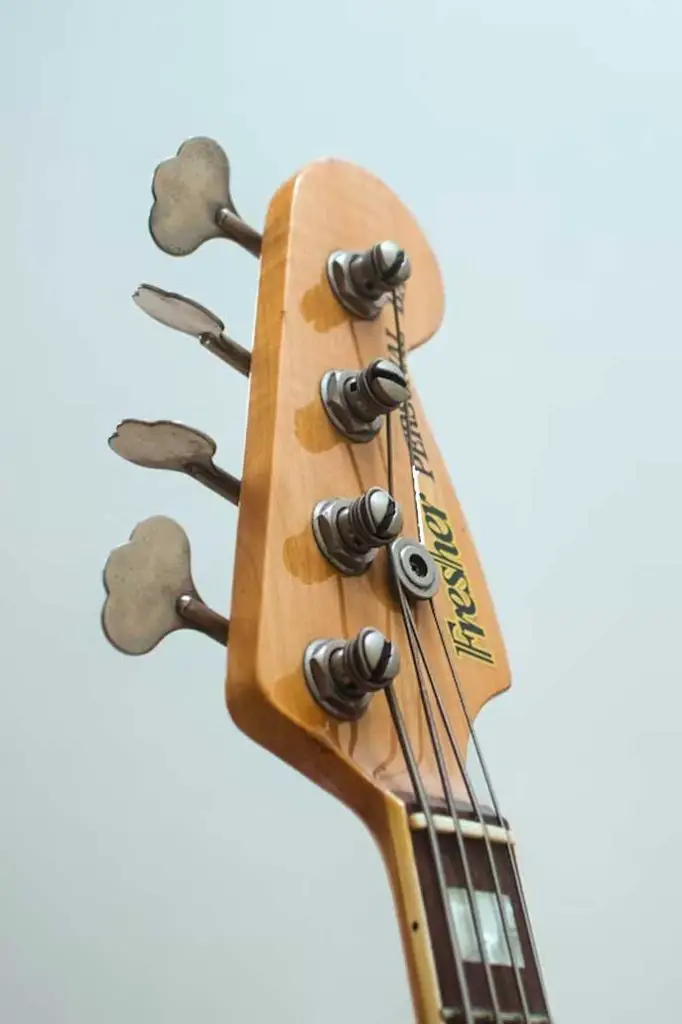
When deciding between learning to play the bass or the guitar, it’s essential to consider your personal goals and playing style. Both instruments offer unique experiences, and it’s important that you find the one that best aligns with what you’re looking to achieve musically.
Personal Goals and Playing Style
Think about the music genres you enjoy and the role you’d like to play within a band setting. Guitar is a popular choice for many due to its versatility in rock n’ roll, melodic playing, and solos, while bass is often a supporting instrument, well-suited for jazz, funk, and hip-hop genres.
Getting Started with Gear
Once you’ve chosen the instrument that aligns with your goals, it’s time to gather the essential gear to get started.
For a guitarist, this may include an electric or acoustic guitar, picks, a strap, an amplifier (if you’re going electric), and a tuner.
Depending on the type of guitar, steel or nickel strings are recommended for electric guitars, while acoustic guitars have a variety of string options.
Bass players will need a four-, five-, or six-string bass guitar, a strap, an amplifier, and a tuner. Bass strings are typically longer, thicker, and more expensive than guitar strings.
When it comes to tuning your bass, a common four-string bass tuning is E-A-D-G, with additional strings providing options for more range in higher or lower notes.
Regardless of your choice, both guitar and bass require a commitment to learning and practice. As you progress, you’ll develop your playing style and discover new ways to express yourself musically on your chosen instrument.
Author Profile
-
Daniel Johnstone is an English writer with a love for stringed instruments from around the world.
He shares his love for these instruments through his writing for folkstrings.com, a website dedicated to all things related to folk string music.
Daniel's passion for music started at a young age, and he has since become an accomplished musician, playing guitar, cavaco, and recently, the harp.
His dedication to learning and sharing his knowledge of stringed instruments is evident in his insightful and engaging blog posts. Whether you're a seasoned musician or a beginner, Daniel's writing is sure to inspire and entertain you.
When he's not playing music or writing, you can find Daniel exploring new instruments and seeking out new sounds to share with his readers.
Latest entries
 AutoharpApril 4, 2024What Is the Autoharp Made Of: Exploring Its Materials and Craftsmanship
AutoharpApril 4, 2024What Is the Autoharp Made Of: Exploring Its Materials and Craftsmanship AutoharpApril 4, 2024Is Autoharp Easy to Play? Unveiling the Truth for Beginners
AutoharpApril 4, 2024Is Autoharp Easy to Play? Unveiling the Truth for Beginners AutoharpApril 4, 2024What Is an Autoharp Worth? Your Guide to Pricing and Value
AutoharpApril 4, 2024What Is an Autoharp Worth? Your Guide to Pricing and Value AutoharpApril 4, 2024Are Autoharp and Zither the Same Thing? Unraveling String Instrument Myths
AutoharpApril 4, 2024Are Autoharp and Zither the Same Thing? Unraveling String Instrument Myths
Affiliates:
This post may contain affiliate links that at no additional cost to you, the site may earn a small commission. We only recommend products we would use ourselves and all opinions expressed on this site are our own.
Accuracy Advice:
While we strive to provide up-to-date and accurate information, the content in this article may not reflect the most current research or medical guidelines. We encourage readers to do further research and consult with professionals for more personalized advice.
Our Recommendations:
The products and services mentioned in any of our articles are recommended based on our independent research and personal experience. We are not sponsored by any company. We aim to suggest products and services we believe are of high quality and could be beneficial to our readers.

